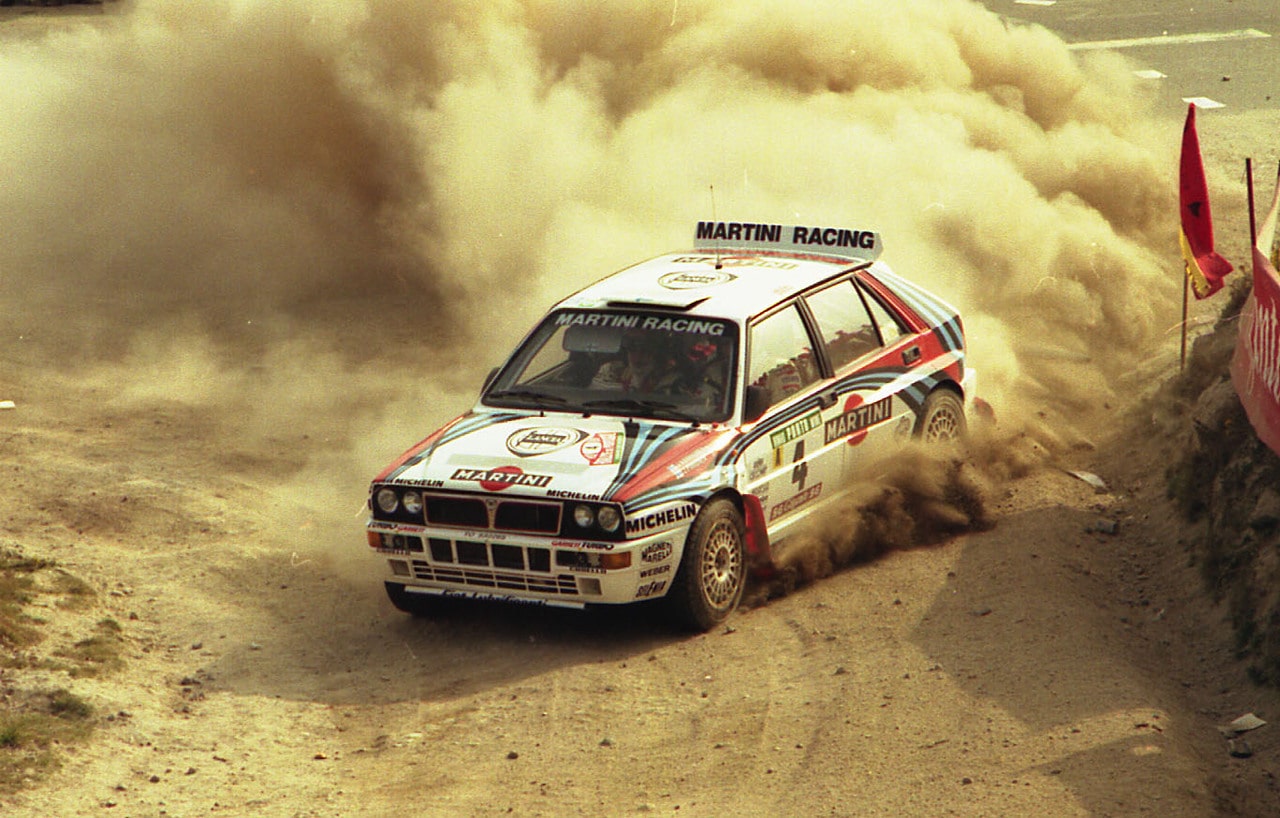Group B was a set of regulations in rallying from 1982 to 1986 that replaced the Group 4 and Group 5 rules. The era of Group B is infamous for the lack of control about car development, fatal accidents of drivers and absence of crowd control during events (spectators used to touch the cars and lose their fingers).
How Group B started
It was the end of the 1970s and the FISA (Fédération Internationale du Sport Automobile) invited the BPICA, an organisation which represented the interests of car manufacturers in motorsport, to help negotiate for new regulations in the World Rally Championship. The main idea was for there to be less regulations and more freedom and to accomplish this an overhaul of the current rule book was necessary. The outcome was that all of the road car based racing categories would be regrouped into a total of three groups: Group A, Group B and Group C. The FISA added a fourth category, Group N, at the last moment but the manufacturers had near zero interest in it at the time. The new regulations were set to go into effect on January 1st, 1982.
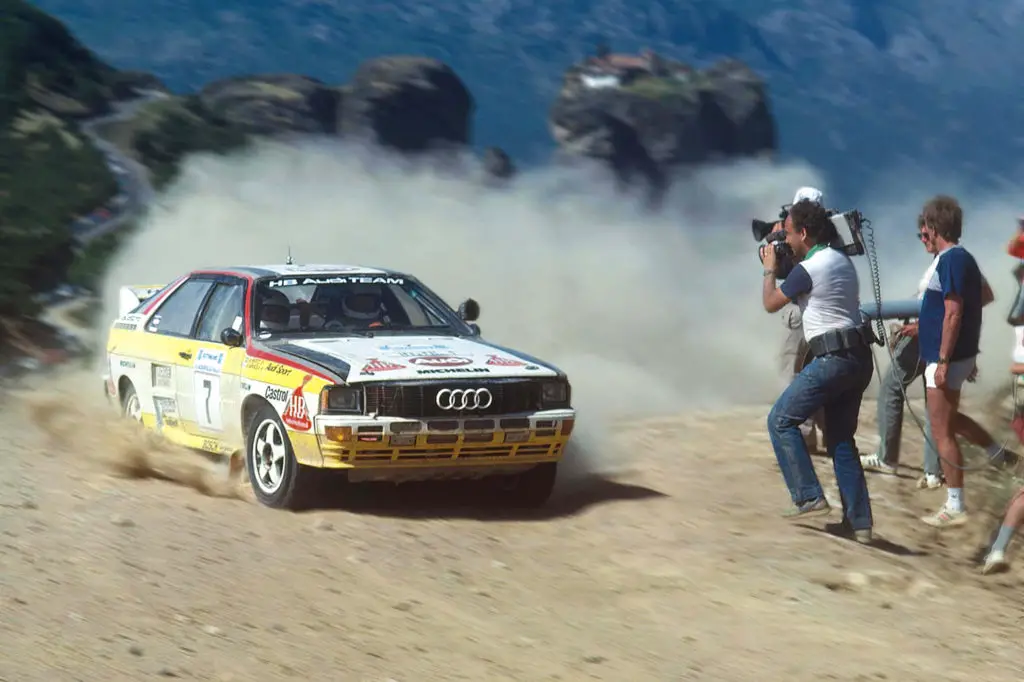
The main idea of Group B was to help lure more car manufacturers into motorsport by bringing down the costs and promising quicker car development. To enter, a manufacturer only had to build 200 homologation cars in the span of 12 months, instead of the 400 required by the preceding Group 4. This greatly reduced the cost for manufacturers but promised greater performance. In May 1981, some details of Group B were still not confirmed, casting doubt if there would be enough cars for the Group B debut which was 7 months away. Therefore it was decided that for the 1982 season previous Group 2 and Group 4 cars would be allowed to compete to give manufacturers time to develop cars for the new regulations while also competing at the same time. FISA mandated that for the 1983 season manufacturers would have to run Group B homologated cars to be able to score points. Some manufacturers were still not willing to embrace the new regulations and invest money into Group B without a guarantee that FISA would not change the regulations again. FISA then added a 5-year clause which meant that the regulations would not change until at least the end of the 1987 season and that Group B could not be cancelled with a shorter than 2-year notice.

The regulations
There weren’t many rules for the cars – apart from basic safety requirements the cars only had to have the following:
- The car had to have two front seats side by side.
- The car could not have an open roof.
- A minimum race weight calculated by engine displacement and forced induction factor.
- A maximum tire width calculated by engine displacement and forced induction factor.
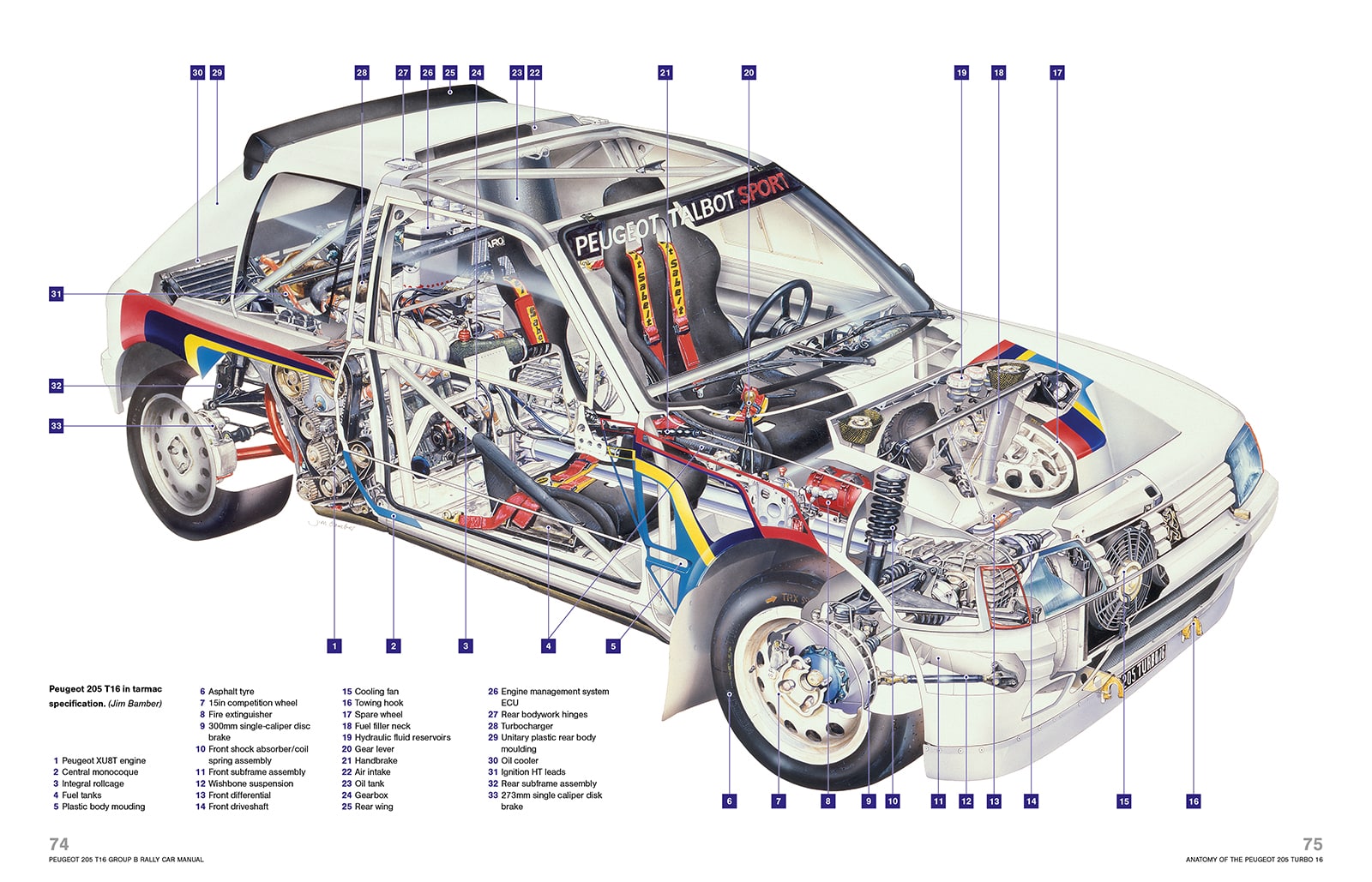
The FISA mandated that cars with a turbo or supercharger would get a multiplication factor of 1.4 to calculate their final engine displacement. That meant that a car with a turbocharged 1397cc engine would actually get an engine displacement figure of 1956cc. That final figure would then be used to determine the minimum race weight and maximum tire width for a car.
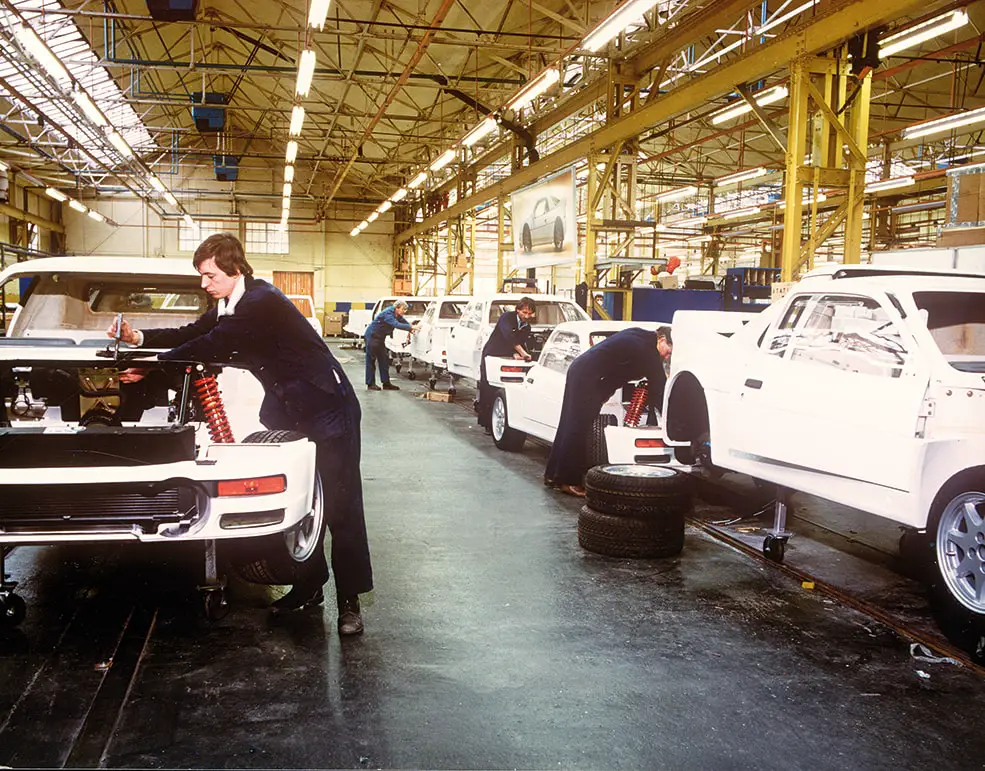
For a car to be accepted into the B category the manufacturers had to build at least 200 road going versions of the car in a 12 month period and the cars would then be counted by a FISA official. It is thought that some manufacturers tricked the officials into counting a single car twice.
The fall of Group B
The sheer speed and fame of Group B cars made fans of rallying crazy. While a record number of people attended races and followed the sport, it was bad for the safety of spectators. Tons of fans would stand on the road during stages creating very dangerous situations. This problem was especially bad in Portugal and Argentina. In Portugal an estimated 4% of the population was in attendance. Jumping out of the way of rally cars became a sort of “national pastime” which further evolved into touching the cars as they were driving by. One who could achieve this feat would be considered a hero among their peers but this led to the Peugeot and Lancia crews finding blood, hair and severed fingers stuck in the wings and ducts of their cars. Any collision injury was a “badge of honor”. Drivers also reported many other problems caused by spectators which included having things thrown at their cars and placing obstacles on the road but organizers kept insisting they couldn’t control the entire length of a stage.
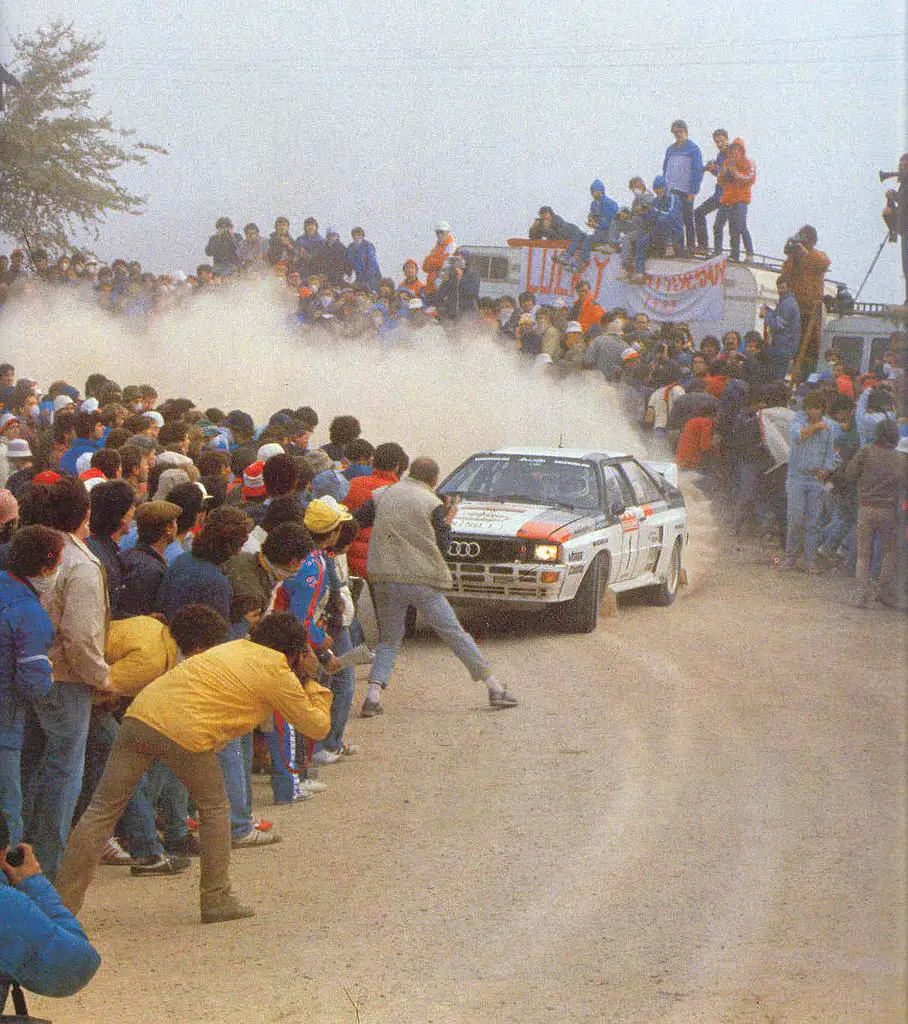
Crash of Attilio Bettega
Until 1985 Group B had experienced only a few major incidents but on May 2nd 1985 a Lancia 037 driven by Attilio Bettega and co-driver Maurizio Perissinot slid off the road, into a ditch, and hit a tree. The Lancia was torn apart by the impact. As the co-driver didn’t sustain any injuries he went to flag down cars coming after them. It took about 20 minutes for the ambulance to arrive but the doctors said that it would not have mattered if it arrived earlier as Attilio Bettega had died from the impact of the crash.
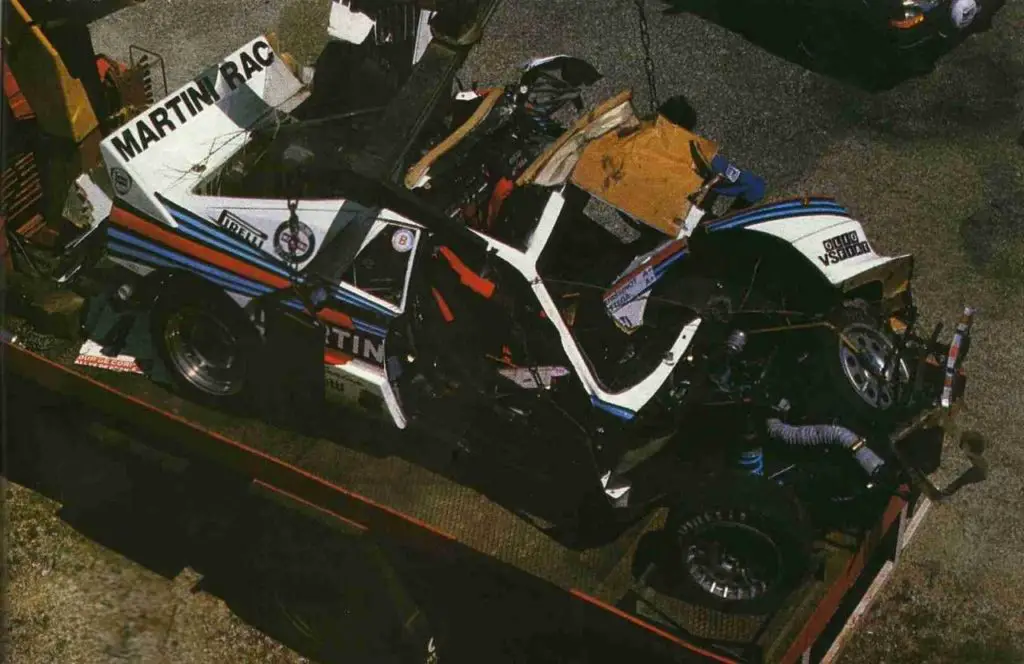
This crash made FISA review the safety of the cars of Group B and it was deemed that even though the cars were made to be very lightweight there was still sufficient protection from the roll cage. It was also concluded that no other racing series car would have saved the drivers life either.
By this time drivers had already said that the cars were extremely hard to handle with such performance levels and co-drivers had a very hard time keeping up with the pace notes as everything happened so quickly. Walter Röhlr, one of the greatest Group B racers, said that finding the balance between outright speed and pace was a challenge in itself.
Crash of Henri Toivonen
May 2nd, 1986 – A Lancia Delta S4 with a crew of Henri Toivonen and Sergio Cresto crashed at Tour De Corse, on the stage Corte-Taverna. The car left the road and rolled down a rocky hill and got stuck in trees where it caught fire. As there were no spectators nearby to clearly see the accident they couldn’t offer any help. Following drivers saw the smoke and radioed for help and the Corsican officials reacted quickly. The roads however impeded the progress of the rescue crew and they arrived 15 minutes after the accident. When they arrived the Lancia Delta S4 was a burnt mass of metal with both the driver and co-driver still strapped in their seats. The FISA investigation concluded that the crew had no chance of escape.

End of Group B
A couple of hours after the deaths of Henri Toivonen and Sergio Cresto, the FISA President Jean-Marie Balestre and Lancia-Martin team boss Cesare Fioro had a private meeting. It is said that Balestre told Fioro that “things can’t go on like this” and that Group B has to stop. Shortly after that a press conference was organized where the immediate freeze on further development of rally cars was announced, including an immediate ban on aerodynamic aids but most importantly the ban of Group B from competition until the end of the year. Group B’s replacement category Group S was also set aside.
Extra reading: Wikipedia

